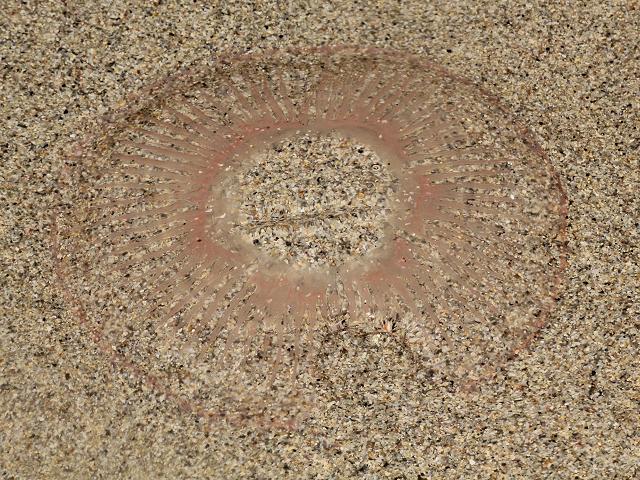
APHOTOMARINE
An educational resource dedicated mainly to the photography
and diversity of marine life that can be found in coastal waters
and intertidal areas of Great Britain and Ireland by David Fenwick.

Aequorea sp. possibly Aequorea forskalea Péron & Lesueur, 1810 ? - Many-ribbed Jellyfish (Hydrozoa)
Scroll down and rollover titles to change screen image or click on title to view image.
Many-ribbed Jellyfish
Aequorea sp. possibly Aequorea forskalea ?
- stranded female ? image taken with flash 1
Aequorea sp. possibly Aequorea forskalea ?
- stranded female ? image taken with flash 1
Many-ribbed Jellyfish
Aequorea sp. possibly Aequorea forskalea ?
- ribs / radial canals 1
Specimen above found washed-up at Sennen Cove, Cornwall. 07.11.12.
The specimen here is not identified, the number of marginal tentacles per radial canal is unknown. Aequorea vitrina is colourless and transparent so I suspect this is Aequorea forskalea, a species that is also frequent around the British coast, my reasons are as follows.
Of Aequorea forskalea, F.S. Russell in The Medusae of the British Isles states on p. 343, 'According to Claus the male gonads are blue and the female rose', so this could be a female Aequorea forskalea. However Russell reports that the only certain record of Aequorea forskalea in British waters are in April and July at the mouth of the English Channel and the specimen here was found in November. The timing is perhaps less important given climatical changes seen since Russell described this species, in 1953. Aequorea vitrina gonads and marginal tentacles are colourless so it is unlikely to be this species.
Of Aequorea pensilis Russell states "has an umbrella of glass-like transparency: colour of gonads yellowish green masked by blue-grey pigment granules which alone persist after preservation; marginal tentacle bases and stomach colourless".
Scientific and European Names:
Aequorea forskalea, Many-ribbed Jellyfish.

The main objective of this website is in furthering environmental awareness and education through the medium of photography. To increase awareness and access to the wildlife of the region and help
people find and identify it. Sometimes the difference between species is obvious but many species can only be determined by observing microscopic characteristics that are specific to any one species.